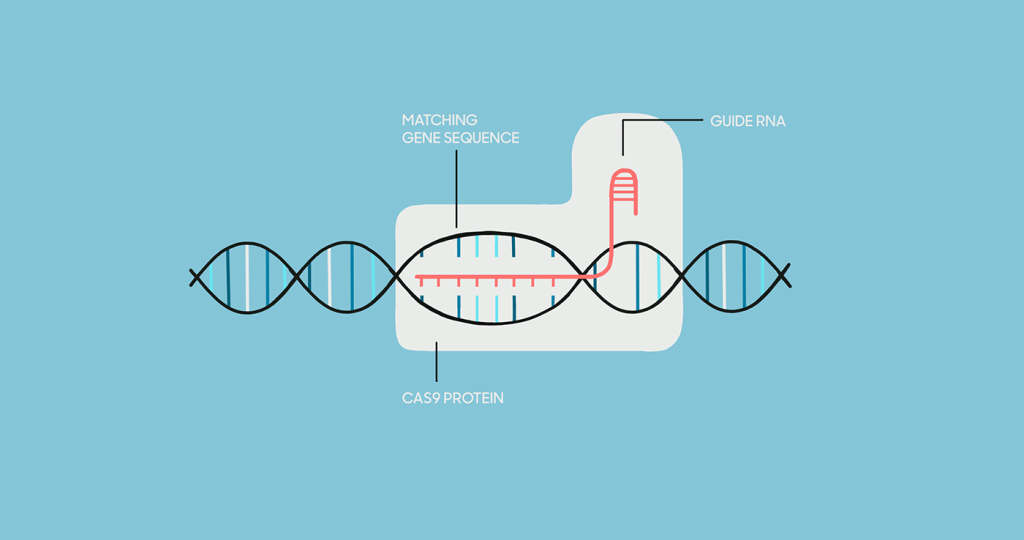Introduction: Advancements in CRISPR Editing
The recent advancements in CRISPR-Cas9 and Genetic Engineering Breakthroughs have been a definitive moment in genome editing. The CRISPR (clustered regularly interspaced short palindromic repeats) and Cas9 system is a technology that has revolutionized the field of genome engineering.
The invention of CRISPR-Cas9 system is a perfect demonstration of how bacterial defense mechanisms can transform human scientific research. In the CRISPR-Cas9 mechanism, the Cas9 protein, guided by a custom guide RNA (gRNA), can bind to specific DNA sequences and cleaves the target DNA at the desired location. The method relies on the cell’s DNA repair apparatus to add, delete, or alter particular DNA sequences.
This bacterial adaptive defense mechanism against viruses was repurposed for site-specific genome editing in human cells. This transformation in gene editing technology has seen a surge of excitement in the scientific community around the world.
Identifying Novel Cas Variants for Increased Efficiency
Expanding Scope of Genomic Targets Through Novel Variants
To further heighten the performance of CRISPR, attempts are being made to identify novel types of Cas proteins for increasing efficiency. These novel Cas variants pave the way for an expanding scope of genomic targets and are useful for site-specific editing technology.
Boosting DNA Specificity Through Engineered Cas Variants
There is a growing interest in engineering Cas variants with improved specificity. By boosting DNA specificity, these engineered Cas proteins can reduce off-target effects, thus increasing the reliability and efficacy of gene therapies.
Precision and Control: Next Level Genome Editing
A New Age of Base Editors
We’re ushering into a new era of base editing which can be considered as a prime example of precision and control in the dynamic field of genome editing. Base editing is an innovative approach that enables direct, irreversible conversion of one base pair to another at a target genomic locus without introducing double-strand breaks (DSBs), a key feature that offers more precision and fewer errors than conventional methods of gene editing.
Prime Editing: A Leap Forward
Prime editing represents another significant leap forward in genome editing. It’s a transformative approach that allows the insertion, deletion and replacement of DNA sequences, increasing the applicability of CRISPR-based genome editing technology in the field of therapeutic gene editing.
Leveraging CRISPR for Large DNA Insertion
Given its flexibility and precision, CRISPR can be effectively leveraged for large DNA insertions, thus significantly increasing the effectiveness and potential applications of gene therapy. The unique mechanisms within the CRISPR system, such as homology-directed repair (HDR) and non-homologous end joining (NHEJ), allows the integration of large DNA fragments at the double-stranded break sites.
Developing Efficient CRISPR Delivery Systems
One of the primary challenges in the application of CRISPR-based genome editing techniques is the introduction of editing tools into human cells. This delivery of CRISPR components requires intensive research, and significant advancements have been made via viral and non-viral delivery methods.
CRISPR in Modeling and Counteracting Cardiovascular Diseases
CRISPR is being used as a powerful tool in modeling and counteracting cardiovascular diseases. Genome editing technologies are now being utilized for generating human cell-based disease models, drug screening platforms, and potential therapeutic options for counteracting cardiovascular diseases.

Insight on Genome Editing in Cardiovascular Disease Treatment
CRISPR’s impact in cardiovascular disease treatment is profound. Scientists have been able to model human cardiovascular diseases in the laboratory using CRISPR, which allows them to study disease mechanisms, identify targets for drug development and even personalize medical treatments.
Conclusions and Future Perspectives
The potential of CRISPR in genome editing is just beginning to be realized, with numerous research being conducted to refine the technology, improve its safety, specificity, and delivery. Undoubtedly, CRISPR technology represents a significant paradigm shift in the field of genomic medicine.
Consenting and Ethical Aspects in Genome Editing
Gene editing technologies like CRISPR present some ethical and consent-based complications that need to be comprehensively evaluated. While these technologies can treat or prevent diseases, they also raise questions about the manipulation of the genome, consent, and the potential for misuse.
Conflict of Interest: A Responsibilities Perspective
The rapid evolution of CRISPR technology for genome editing and its potential commercial application present novel conflict of interest scenarios. As we move forward with this technology, it’s crucial to address these conflicts and establish clear policies that ensure responsible use of genome editing technology.
Acknowledgments and References
et al. Genome editing with the CRISPR-Cas9 system: an art, ethics and global regulatory perspective. Trends in Biotechnology (2019).
